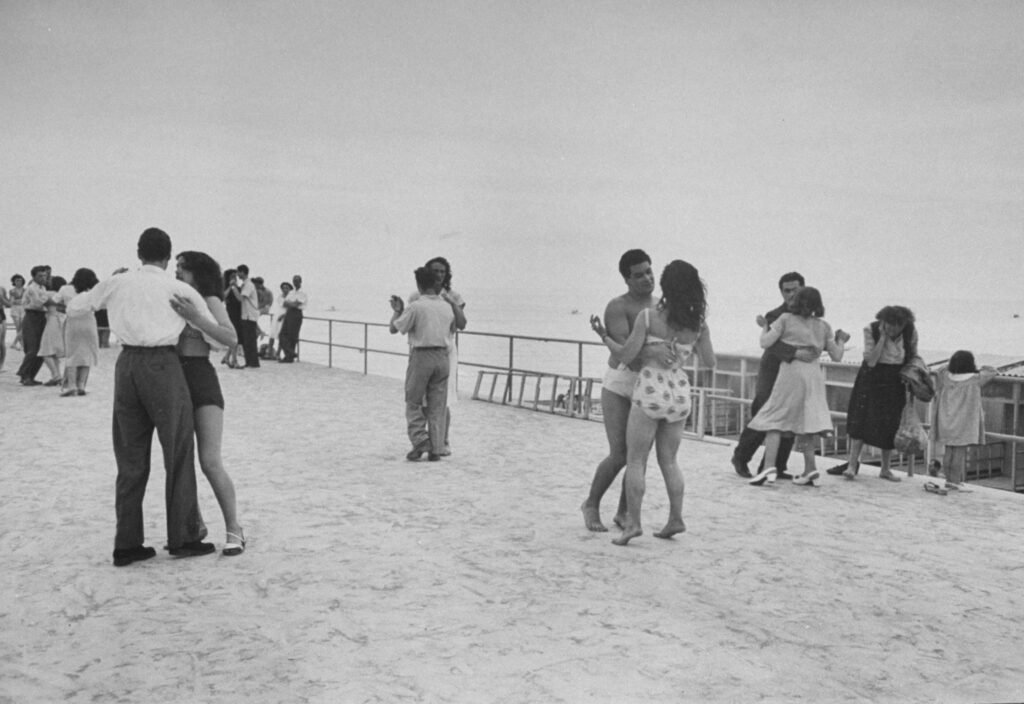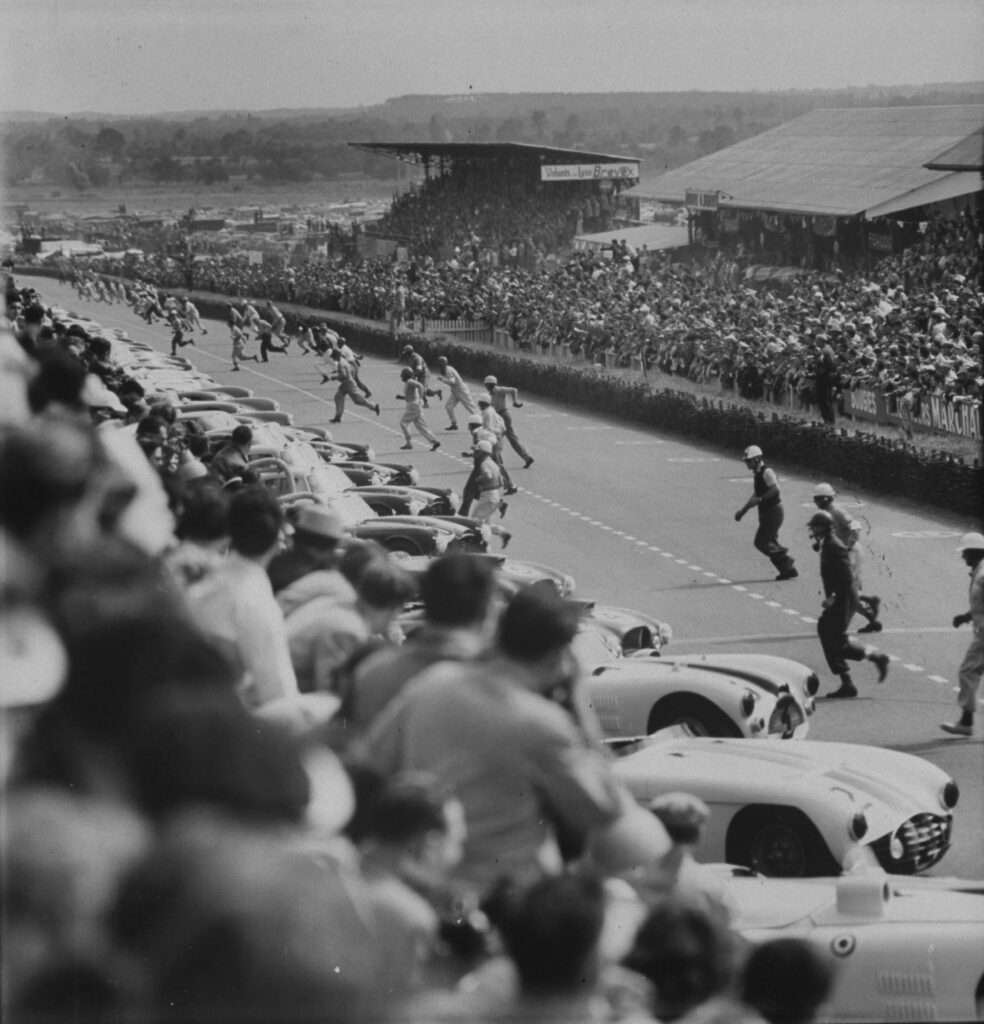Gene Tierney is best remembered for her performance in the title role of the 1994 film noir classic Laura, which in 2008 was named one of the ten greatest mystery movies by the American FIlm Institute. She also merits recognition for talking publicly about her mental health struggles long before it came common to do so.
Tierney made her film debut at age 20 in the Fritz Lang western The Return of Frank James, and her star ascended rapidly with the success of Laura and also the 1945 film Leave Her To Heaven, which earned her an Academy Award nomination for Best Actress. She married for the first time in 1941, eloping with future fashion star Oleg Cassini, who was then working in Paramount’s costume department. (The couple had two children, the first of whom was born with severe disability that would require lifelong institutionalization. The couple would separate in 1946 and finally divorce in 1952). After separating from Cassini, Tierney had a romance with John F. Kennedy in 1947, though she said he eventually broke it off because she would not fit in with his political ambitions (and in one of history’s odder triangulations, when JFK became president, it was Tierney’s ex-husband, Cassini, who famously designed dresses for Jackie Kennedy).
Tierney’s mental health issues began to interfere with her work in the 1950s, when had to drop out of the production of John Ford’s 1953 film Mogambo, being replaced by Grace Kelly. After finishing production of the 1955 film The Left Hand of God, Tierney took off from acting entirely to seek inpatient treatment that included stays at multiple institutions, shock therapy treatments and days wrapped in icy sheets to control her mood swings. This story includes images by LIFE photographer Francis Miller from when Tierney was discovered to be working anonymously as a sales clerk at a dress shop near Topeka, Kansas, reportedly as part of her therapy.
In 1958 Tierney declared herself ready to act again. Photographer Allan Grant chronicled her return to Hollywood in LIFE’s Sept. 29, 1958 issue. In that story she talked openly about her mental health treatment:
Looking happy, relaxed, and as exotically lovely as ever, Gene Tierney came back to Hollywood last week after four long absent years. Starting at her old studio, 20th Century Fox, which had continued her salary all through her absence, she toured movie lots on which for 18 years and 25 major films she had been one of the brightest stars. She was, she said, “letting people know I am back in town and available for work.” And everywhere she went top executives, actors, carpenters, came hurrying to shake her hand or hug and kiss her and welcome her home.
To those who asked, Gene, who is now 37, spoke with easygoing directness about where she had been—burdened with personal troubles, she had broken down. She had spent one and a half years in the Institute of Living in Hartford, Conn., a mental sanitarium, then gone into seclusion, then had been for eight months at the Karl Messinger mental clinic in Topeka, Kan. “It was a time,” she said, “for rest and quiet and there were many wonderful things—doctors, other patients. And I found a new pleasure in reading. The words began to mean more than ever before,” and she recited Shakespeare’s sonnet, “When, in disgrace with fortune and men’s eyes/I alone beweep my outcast state/and trouble deaf heaven with my bootless cries/and look upon myself and curse my fate….” Then she said, “But I was most fortunate. My illness was curable.”
In the photos she was all smiles. But while Tierney did get back to moviemaking, her career over the next few years was marked by stops and starts. By 1964 she had largely retired from acting, returning only on rare occasions. She wrote an autobiography, Self-Portrait, that came out in 1979 and detailed her battles with mental illness. Her final acting role was in the 1980 TV miniseries Scruples.
She married for a second time, to Texas oilman W. Howard Lee in 1960, and they were together in Houston until his death in 1981. Tierney died on Nov. 6, 1991 at age 70.

Gene Tierney during the filming of the 1946 movie Dragonwick.
Walter Sanders/LIfe Picture Collection/Shutterstock

Gene Tierney during the filming of the 1946 movie Dragonwick.
Walter Sanders/LIfe Picture Collection/Shutterstock

Gene Tierney during the filming of the 1946 movie Dragonwick.
Walter Sanders/Life Picture Collection/Shutterstock

Actress Gene Tierney was nominated for an Academy Award for Best Actress for her performance in the 1945 film Leave Her to Heaven.
Martha Holmes/Life Picture Collection/Shutterstock

Gene Tierney and Jose Ferrer in the 1950 movie Whirlpool.
Alfred Eisenstaedt/LIfe Picture Collection/Shutterstock

Gene Tierney clerking in a dress store near Topeka, Kansas; she worked there anonymously as part of her mental health treatment.
Frances Miller/Life Picture Collection/Shutterstock

Gene Tierney clerking in a dress store near Topeka, Kansas; she worked there anonymously as part of her therapy.
Frances Miller/Life Picture Collection/Shutterstock

Gene Tierney clerking in a dress store near Topeka, Kansas; she worked there anonymously as part of her therapy.
Frances Miller/Life Picture Collection/Shutterstock

Film director George Cukor greeted actress Gene Tierney on her return to Hollywood after taking years off for mental health issues, 1958.
Allan Grant/Life Picture Collection/Shutterstock

Actress Gene Tierney during her return to Hollywood, 1958.
Allan Grant/Life Picture Collection/Shutterstock

Actress Gene Tierney spoke with Joanne Woodward (left) on Tierney’s return to Hollywood in 1958.
Allan Grant/Life Picture Collection/Shutterstock

Gene Tierney visited a film set during her return to Hollywood, 1958.
Allan Grant/Life Picture Collection/Shutterstock






















































































